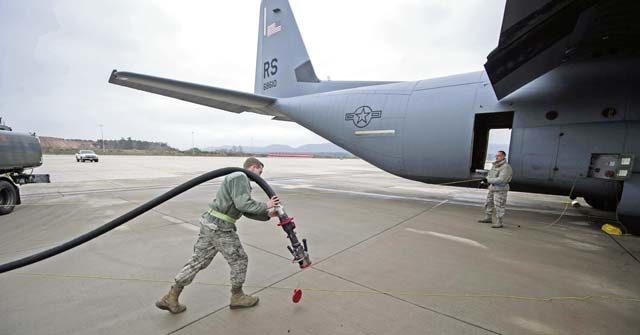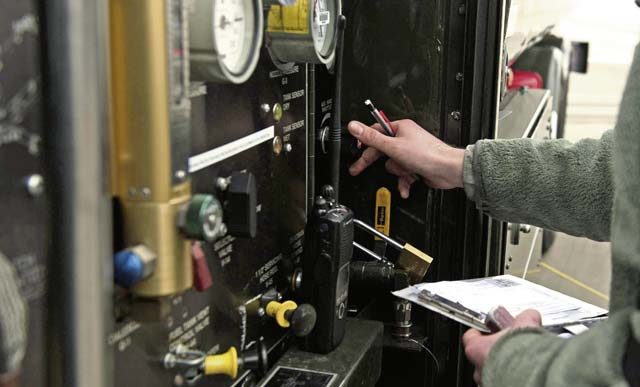
Technology is advancing every year. It keeps us warm during the winter, cooks our food, and ensures transportation gets us from point A to point B. But no matter how far we technologically advance, we will always need fuel.
Here, fuels technicians must work across the base to ensure the mission gets done, because without fuel pilots are pedestrians.
One of these technicians, Airman 1st Class Austin Bashaw, 86th Logistics Readiness Squadron fuels distribution operator, works with JP-8 jet fuel, unleaded, and diesel fuel every day, ensuring it’s transported to the right place at the right time.
“The primary thing I do day to day is refuel aircraft,” Bashaw said. “This task is accomplished with either one of our R-11 fuel trucks or a pantograph, which is essentially stainless steel piping with a meter on wheels. The R-11s have a tank that holds a capacity of 6000 gallons. The pantographs are hooked up directly to the underground fuel hydrant system and fuel is supplied directly to the aircraft from the tanks.”
It is the job of the fuels management flight to manage every aspect of refueling for every aircraft on the flightline. More than handling fuel, these professionals are also responsible for operating the vehicles, equipment and storage facilities that are essential to the refueling operation, while also ensuring the compliance of all safety regulations involved with the handling these volatile liquids.
Here, the process begins when fuel enters the base from the European pipelines. It is then directly received in storage tanks scattered across the base. Some hold more than 1 million gallons. The fuel is then issued via truck or pantograph. Throughout the process, fuels laboratory technicians periodically sample and analyze the fuel to ensure it is clean, dry and serviceable prior to being issued to the customers on the flightline.
“Some of the challenges include meeting response times so that planes may leave on time,” Bashaw explained. “Sure you have to work pretty hard most days, but working in fuels has been a very rewarding experience for me.”
These are just some examples of what fuels Airmen manage every day, Bashaw said.
The fuel mission itself is similar to many around the world, but the scale and location of it makes it different, according to Master Sgt. Terrance Ladd, 86 LRS fuels superintendent.
“Ramstein’s heavy airlift mission and being the gateway allows our Airmen the opportunity to see immediately how their job impacts missions across the globe,” Ladd said. “Our Airmen have an unique ability to wake up to some news channel about a humanitarian ops mission in Europe, come to work and issue fuel to the aircraft supporting that mission, then read about how successful the mission was later in the week. They have a sense of accomplishment knowing they had input.”
From point A to point B, fuels specialists take on the task of ensuring planes have the energy to provide air power across the world. And while technology advances how we complete our day-to-day tasks, the fuel it needs to function will never go unneeded.
“The way I see it, no matter how well an aircraft or vehicle is put together or if it has all the newest parts put into place, the aircraft will never move off the ground if it does not have fuel,” Bashaw said. “You can’t have an Air Force without working planes.”



